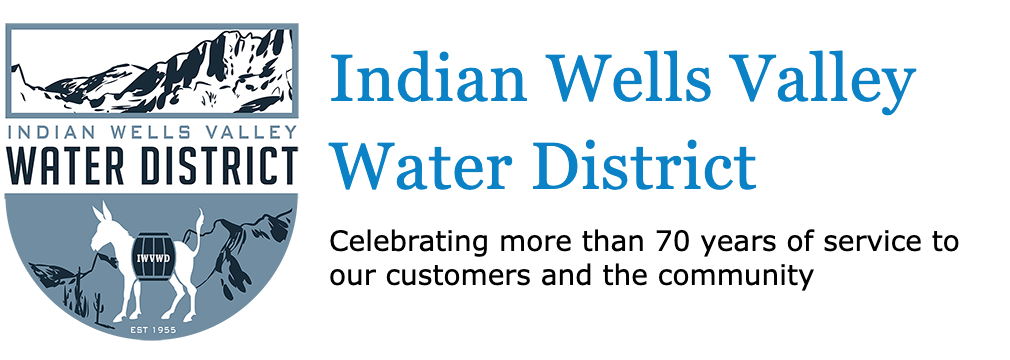Mar 11, 2022 | From Record Snow to Extended Drought: Impact on Groundwater
By Don Zdeba
The week of March 6-12 was National Groundwater Awareness Week, an annual observance established in 1999 to highlight the responsible development, management, and use of groundwater. Over 44% of our nation’s population depends on groundwater as a primary water source. In California, on average, groundwater provides nearly 40% of the water used by California’s farms and cities. That percentage increases significantly in dry years. About 85% of Californians depend on groundwater for some portion of their water supply. Locally, residents of the Indian Wells Valley are 100% dependent on our basin’s groundwater resources.
What began as a promising winter when storms deposited record snowpack on the Sierra Nevada measuring 160% of the average for the end of December, has dwindled to 63% as of the middle of March. An unusually dry and warm start to the year contributed to a couple of inches of snow melt and, more crucially, a lack of additional accumulation. California’s snowpack is not only melting faster but also accumulating less, threatening the state’s water supply, one-third to one half of which comes from the Sierras. During a typical year, runoff from melting of the snow begins in April, and in wet years it can continue to flow through August. Water that’s not absorbed into the ground finds its way into mountain streams, which feed rivers and eventually aqueducts and reservoirs where it can be stored for use throughout the dry season. In years with less snowpack, such as now, runoff can wind down as early as May thereby increasing dependence on groundwater supplies.
Continued dependence on groundwater resources can result in depletion of those resources. Consequences of sustained groundwater depletion include lowering of the groundwater table, increasing energy costs required to pump water to the surface, reduced surface water supplies as lakes, streams, and rivers connected to groundwater diminish, land subsidence, and decline in water quality. It is clear that responsible management of our groundwater resources is critical to the health, safety, and economy of our communities.
California’s Sustainable Groundwater Management Act (SGMA) of 2014 was enacted to halt overdraft and bring groundwater basins into balanced levels of pumping and recharge. For all high- and medium-priority groundwater basins identified by the Department of Water Resources (DWR) in Bulletin 118, SGMA requires the formation of a local Groundwater Sustainability Agency (GSA) to draft and adopt a Groundwater Sustainability Plan (GSP) intended to meet current and future beneficial uses without causing unacceptable environmental or socio-economic consequences. The GSP submitted in January 2020 to the California Department of Water Resources (DWR) on behalf of the Indian Wells Valley Groundwater Authority can be found using this link: https://sgma.water.ca.gov/portal/gsp/preview/59
Though National Groundwater Awareness Week ended March 12, it doesn’t mean that we should not continue to focus attention on efforts to ensure a secure a prosperous future for the Indian Wells Valley. The GSP was recently approved by DWR, a significant milestone. That, however, is not the end of the story as aspects of the GSP are currently in litigation. Additionally, a water rights lawsuit referred to as a Comprehensive Adjudication has been filed by the Indian Wells Valley Water District. It is the District’s desire that this action will result in all stakeholders working cooperatively to develop a solution. The reality is the outcomes of these multiple legal actions will shape the path toward achieving the goal of sustainability.
I encourage everyone to stay informed with updates on the Comprehensive Adjudication. Information can be found using the “Basin Adjudication” tab on the home page of the District’s website, www.iwvwd.com. Information about water issues at local, regional and statewide levels can be found on our Facebook page (IWV Water District). Follow us on Facebook and also on Twitter (@IWVWaterDist).
